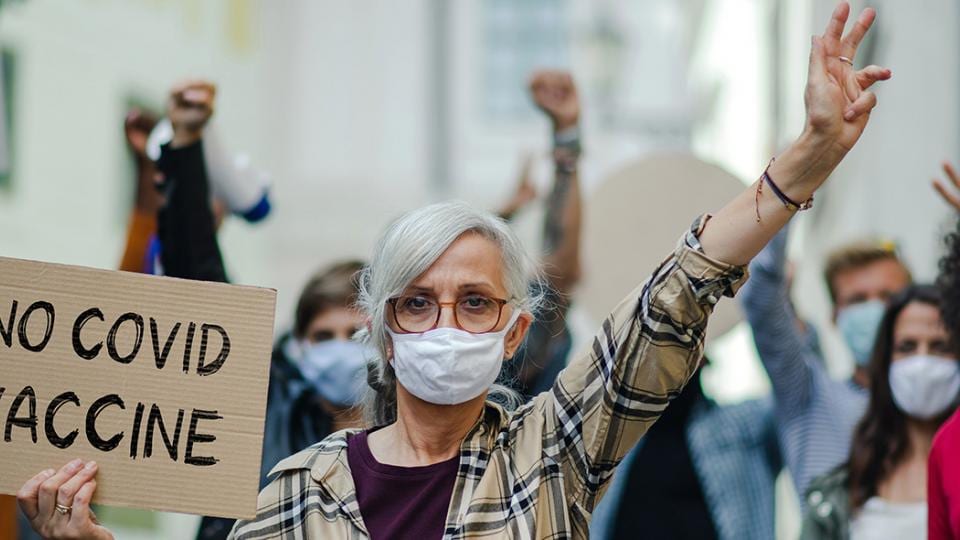How screening, artificial intelligence and genomic testing can help to fight a severe disease

Bayer as a recognized leader in oncology and radiology is fighting cancer on multiple fronts, including one of the most aggressive cancers – lung cancer.
Whether they’ve ever smoked or not, many people with lung cancer are the targets of stigma and blame. Better education and screening, earlier diagnosis, and access to quality care can raise survival rates for the leading cause of cancer death worldwide. We spoke to Dr. Peter Seidensticker, Head of Medical & Clinical Affairs Computed Tomography (CT)/Cardiovascular (CV) and Digital, Radiology at Bayer about the importance of early detection.
Dr. Seidensticker, why are the survival statistics for lung cancer particularly poor compared to other cancers?
Globally, lung cancer claims more lives than colon, breast, and prostate cancers combined. In 2020, the World Health Organization estimated that 1.8 million men and women succumbed to the disease, and tragically, this number is projected to increase significantly by about 40% over the next decade. Screening high-risk individuals – including smokers, people with a family history of lung cancer, and anyone regularly exposed to secondhand smoke, radon, or other harmful substances – can detect lung tumors at earlier, still curable stages. Unfortunately, almost 50% of cases are not caught early but late when the five-year survival rate is only about 6%.
What are the main patient barriers to early lung cancer screening?
Cigarette smoking is the number one risk factor for lung cancer – in the US, it is linked to about 80% to 90% of lung cancer deaths. Against this background, there is a pervasive stigma around lung cancer being self-inflicted, which can deter patients from speaking to their doctors. Research shows that the “shame and blame” attached to lung cancer should not be underestimated, nor should an individual’s fears of being denied optimal treatment or needing to stop work. Other patient barriers include fears of a cancer diagnosis, challenges in accessing quality care, and unawareness of screening programs and the great strides in technology and therapy over the past decades.
Can you share an example of today’s advancements in screening for lung cancer?
Computed Tomography (CT) today plays a central role in detecting lung cancer early. High resolution images of the lungs and surrounding tissues are generated which then support radiologists in detecting potential tumors, in characterizing them in terms of size and shape, and in determining if the disease has already spread into lymph nodes or bones. For regular screening of high-risk patients, low-dose CT is a way to take detailed, three-dimensional images of the lungs with much higher sensitivity to detect small tumors as compared to traditional X-rays. This type of CT scan takes less than a minute and exposes the patient to only low levels of radiation. The smaller a tumor is when it’s found (picture a cherry pit), the higher the chances for treating it before it spreads. According to the American Lung Association, early detection by low-dose CT screening can decrease lung cancer mortality by 14 to 20 percent among high-risk individuals.
Which role does artificial intelligence play in lung cancer detection?
AI provides the means to turn an increasing amount of imaging data into valuable insights, thus augmenting the role of radiologists to provide accurate and timely diagnoses for their patients. There is particular promise in assisting doctors in diagnosing lung cancer: AI can help detect nodules that indicate lung disease, including cancer, early on, particularly in cases where the primary focus of the examination has not been the detection of cancer. Through automated detection, characterization, classification, and prediction of disease progression, AI has the potential to increase detection rates, improve diagnostic accuracy especially in the early phases, to enable more personalized treatment planning, and in the end, to offer a greater chance for better patient survival in the years to come.
Speaking about the possibilities for more accurate diagnosis and subsequent personalized treatments: Which role does genomic cancer testing play?
There are many different types of lung cancer. Genomic cancer tests can identify genomic alterations specific to each tumor. For example, they can identify certain abnormalities in the DNA within cancer cells that determine how the tumor behaves and why it grows. This can help inform patients and their oncology team for their treatment decisions and personalize care by helping better understand the diagnosis.
Is there any advice you would like to give to the readers?
Raising awareness of the importance of early detection is a vital step towards lowering the unacceptably high fatality rate of lung cancer. This includes being sensitive to the taboos surrounding a lung cancer diagnosis, and being committed to tackling the condition early. Participate in regular screening programs and if there’s reason to think that you are at increased risk or even have lung cancer, talk to your doctor about simple, potentially life-saving imaging tests like low dose CT that can identify even small lung tumors.
Bayer’s efforts in fighting lung cancer
Every successful treatment starts with the right diagnosis. Bayer's Radiology organization is a key player in medical imaging with industry-leading products and a history of around 100 years in the field of radiology. Bayer’s radiology portfolio ranges from contrast media and injectors to software supporting radiologists in their mission to provide early diagnosis and inform treatment.
Bayer’s Oncology organization has the passion and determination to develop innovative medicines that help improve and extend the lives of people living with cancer. It focuses its research activities on first-in-class innovations across the following scientific platforms: Precision Molecular Oncology, Targeted Alpha Therapies, and Immuno-Oncology.

Dr. Seidensticker, is a board certified Radiologist who received his medical degree from the University of Heidelberg, Germany. He achieved his doctor’s degree in the area of interventional Radiology while completing his radiological training at the Heidelberg University Clinic and the Charité, Berlin. He has authored numerous scientific articles and published several Radiology text books.
In now 17 years in the company Dr. Seidensticker has worked in various scientific and commercial leadership roles with a proven track record in scientific brand support, data generation, marketing, and strategy.
He is currently Head of Medical & Clinical Affairs Computed Tomography (CT)/Cardiovascular (CV) and Digital, Radiology at Bayer. In his role he oversees the medical support and clinical development of Bayer’s CT/X-ray portfolio.
U.S. Preventive Services Task Force (USPSTF) recommends yearly lung cancer screening if all following criteria apply:
• you have a 20 pack-year or more smoking history
• you are still smoking or have quit within the past 15 years
• you are between 50 and 80 years old
Up to 49% of patients who undergo genomic cancer testing find actionable alterations, which means that they could be matched to either an approved therapy or a drug in a clinical trial. Determining the exact alteration of a tumor can reduce the number of treatments a patient may try.
You can learn more about genomic cancer testing at TestYourCancer.com.




















